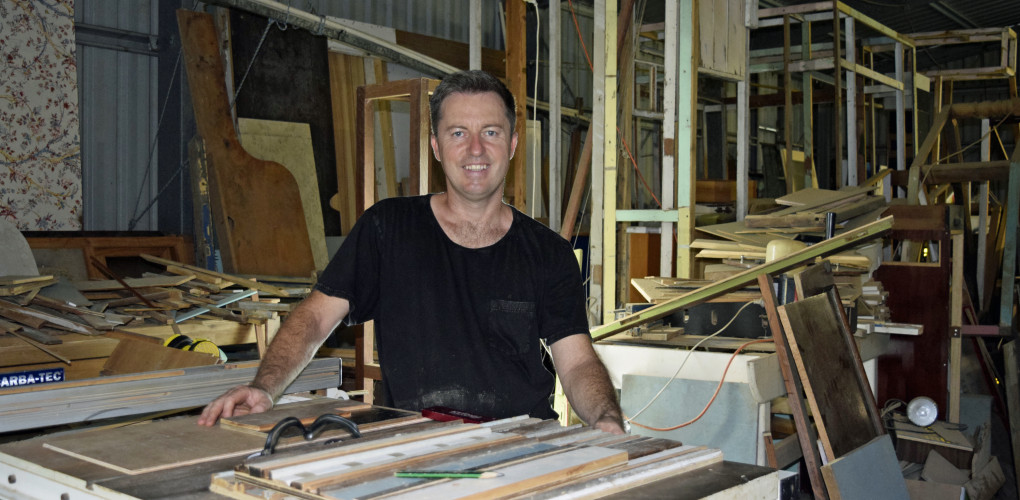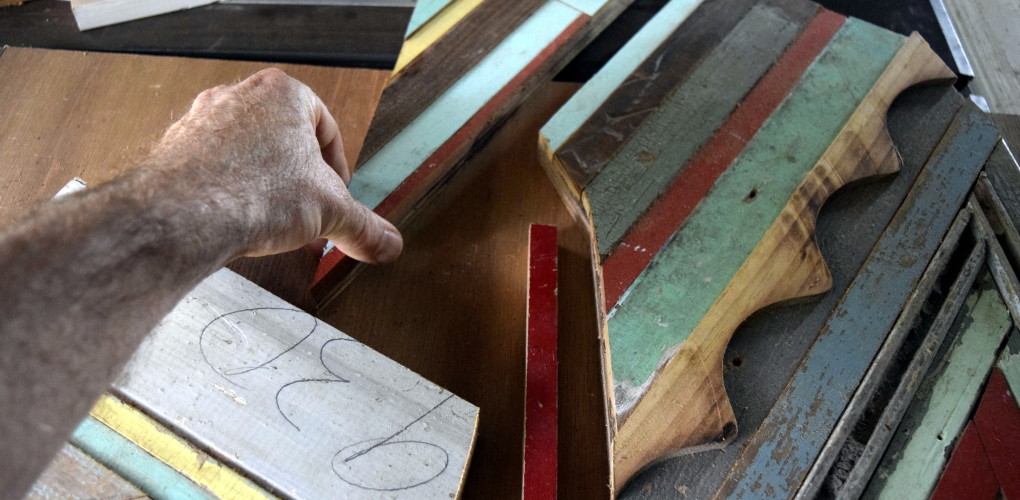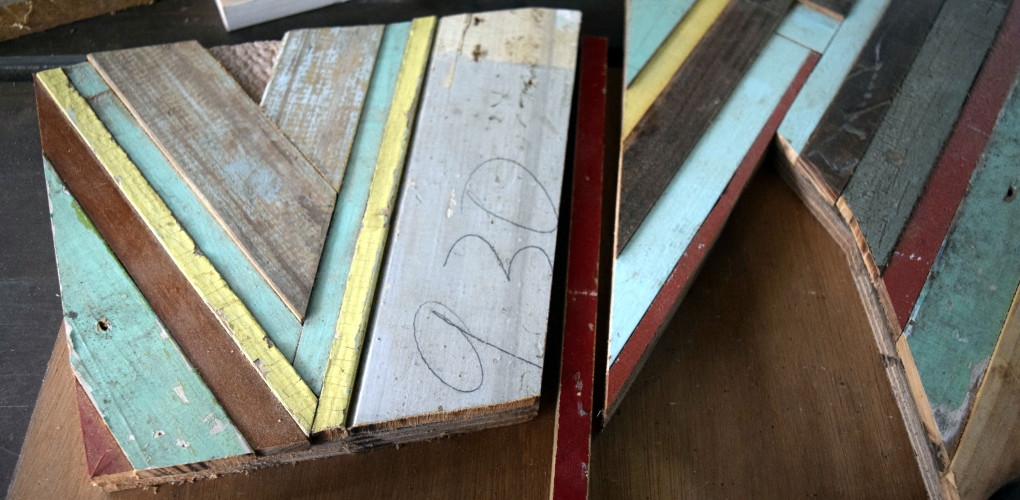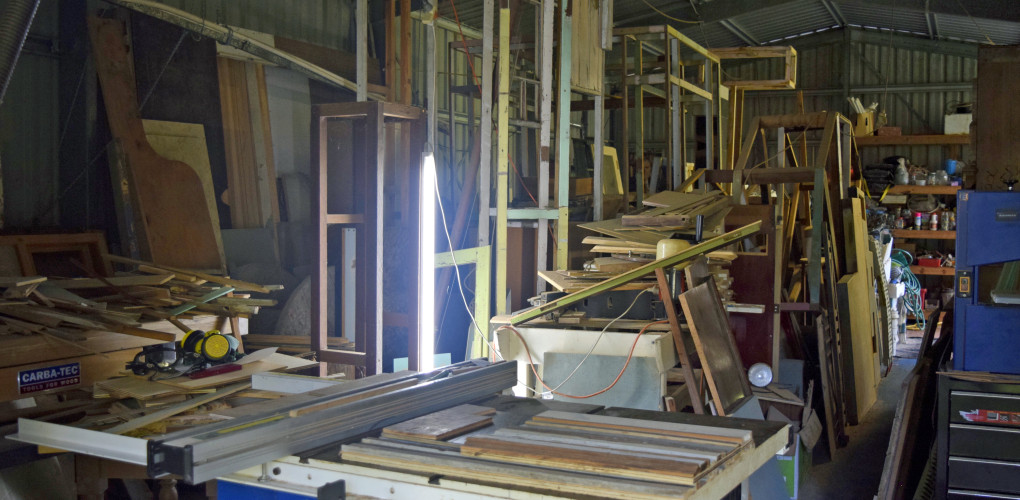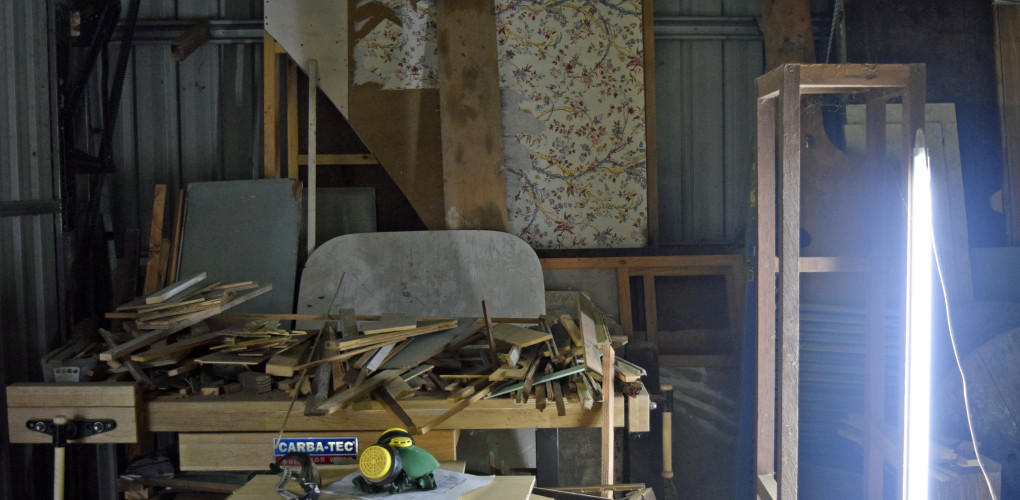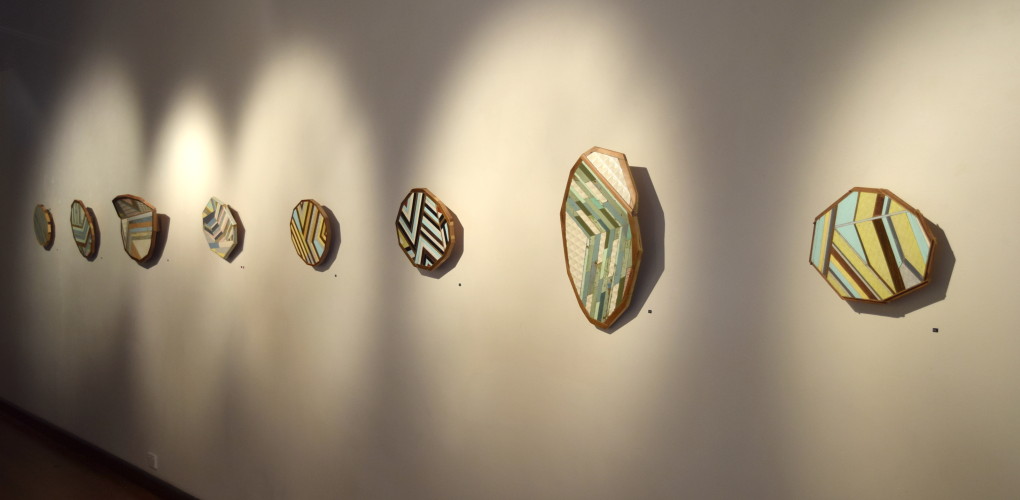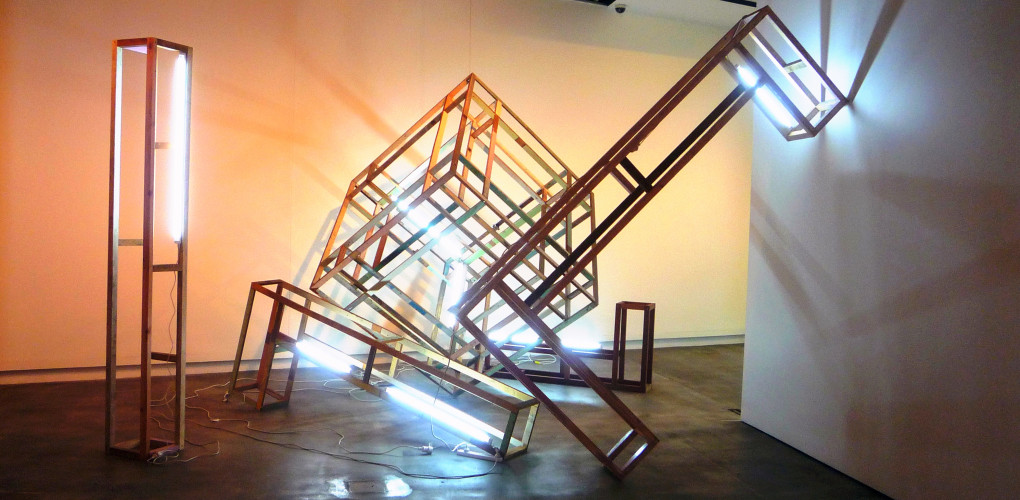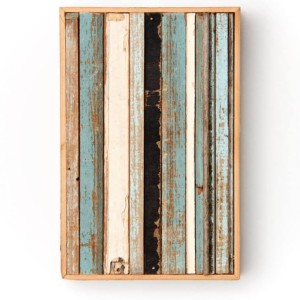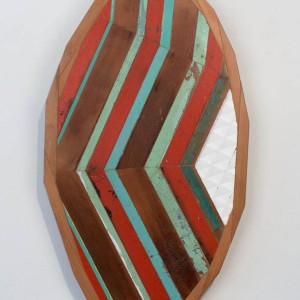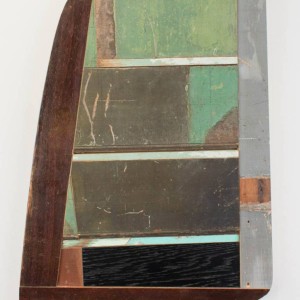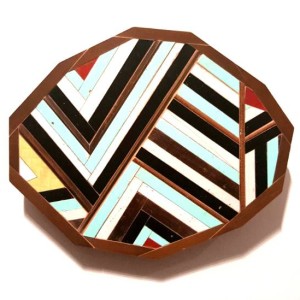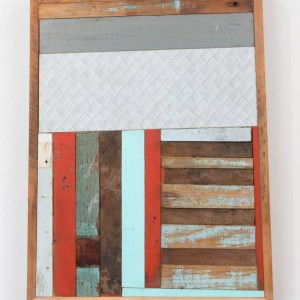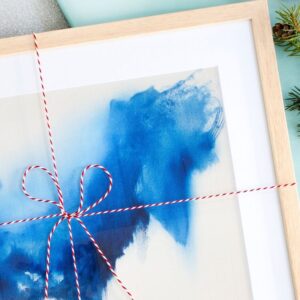One to Watch
 James Watts
James Watts
James Watts is an emerging artist currently living and working in Brisbane, Queensland, Australia. He earned a BFA with first class honors from the Queensland College of Art. James’ abstract geometric sculptures are made of everyday found objects and materials, sourced from his immediate surroundings. He is interested in the forgotten histories of these materials, laid bare by the scratches and cracks on their surface, and how their meaning evolves as they are transformed into a work of art.
James is the recipient of several awards and scholarships, including the Queensland Art Gallery scholarship, the Ex de Medici and Griffith Artworks Award, and the Flipbook Gallery Professional Development Award. He has shown his sculptures and installations in exhibitions across Australia, most recently at the Woolloongabba Art Gallery in Brisbane.
What are the major themes you pursue in your work?
My sculptures and installations utilize everyday objects and materials selected from domestic or renovation sites and industrial areas throughout my immediate environment. Themes relative to social, cultural, economics, historical, environmental and aesthetics are implied through the transformation processes involved. Spontaneity governs how the found materials and objects are incorporated in my work; I intuitively orchestrate the materials to transform the meaning drawn from their former use in everyday life.
The preservation of these discarded materials also evokes those who have lived alongside these remnants; they are inscribed in the work as scratches, cracks and marks that are records of the historical. In turn, identity, time and place are also evoked. I am interested in how we relate to the environment we live in, as well as the objects and materials we surround ourselves with.
I am also interested in cultural values and ideals of aesthetic beauty and how these influence the way we view, perceive, and value art. Often I integrate materials that contain painterly and worn characteristics as a way of stimulating various impulsive flashes of memory, generated by our past experience with everyday objects, materials and places that link the complexity of the work together.
One frequently relates and identifies with an object through an emotional connection. The fondness for an object or material consequently is determined by our needs, desires and memory, corresponding with one’s cultural values and life experiences. Through memory and recollection, our perception of ordinary materials in sculpture creates a heightened awareness to question one’s overall comprehension of the work and the way it is negotiated according to our sense of order and own experience of the world.
What was the best advice given to you as an artist?
Believe in yourself.
Prefer to work with music or in silence?
This is an interesting question, as often I have thought of art as part of the healing process. I think art and music are very much united in this sense. They both allow a space to express our deepest emotions. I work in a big shed out in coastal bushland so I mainly work with noisy machinery, however I often find myself humming or singing a song during the quieter stages of the creative process.
If you could only have one piece of art in your life, what would it be?
Another interesting and difficult question. Only one!? Perhaps Martin Puryear, Untitled (2000). I love both the simplicity and complexity of the work. For me, it resonates tranquility and a sensitivity to our existence with nature. I am also a huge fan of Doris Salcedo and Rosalie Gascoigne.
Who are your favorite writers?
Gaston Bachelard, Oscar Wilde, Stuart Wilde, George Orwell, Virginia Woolf, and Jeanette Winterson. I loved reading Roald Dahl books when I was a kid.
